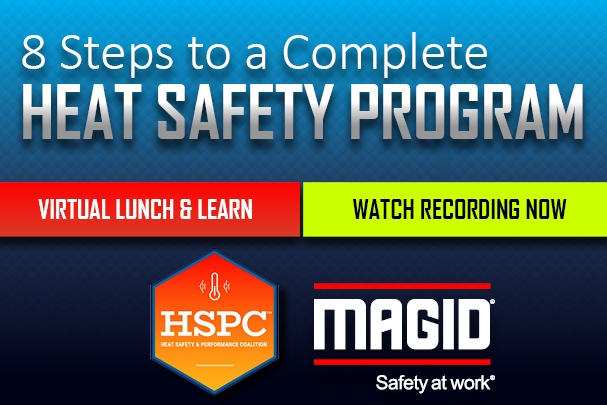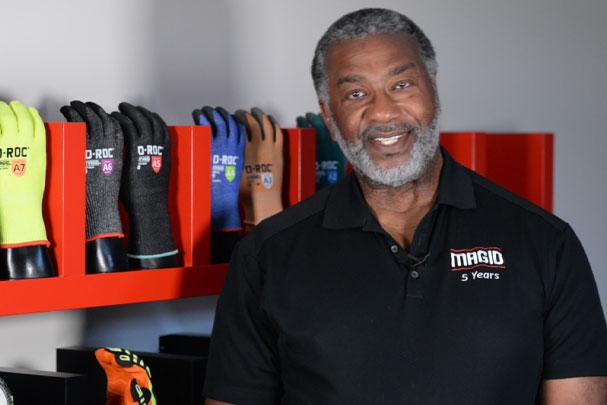
Keeping Workers Safe in a Pandemic While Staying Agile
The coronavirus adds an element of unpredictability to your workplace that’s impossible to control, so it’s important to change the way you do business to minimize the possibility of infection. We say “minimize the possibility” because counting on no one in your facility becoming infected with COVID-19 is probably a losing bet.
Whether your company is under strict social distancing rules, or you’re just restarting production, use these steps both to lower the likelihood of an infection and to stay as agile as possible so you can continue producing in the event of an infection at your facility.
Where to Start
Start mapping out a plan for your entire operation and job site and ask yourself some questions.
- Are there logical areas that can be isolated from others like shipping and receiving?
- How can you limit the migration of contamination at your jobsite in the event of an infection?
- Can your workers still accomplish tasks while limiting contact among their team?
- If you need to thoroughly clean the entire facility, are there logical ways you could attack the problem more efficiently?
Creating a strategy of potential scenarios to answer these questions is an effective way to prepare for potential outcomes.
Safety from Beginning to End
After you’ve assessed your workplace and created an outline of potential ideas, institute policy changes that make sense for your facility. Some changes may include:
- Assigning different entry and exit points for various teams and shifts
- Disabling fingerprint scans or time-clock devices that involve a high degree of human contact
- Providing nitrile gloves and medical masks at entrances and throughout common work areas
- Providing sanitizing wipes at entrances and throughout work and break areas
- Increasing the air exchanges or mix of fresh air with re-circulated air
Communicate, Communicate, Communicate
New processes and guidelines lose their effectiveness if team members are not on board. Additionally, implementing all these changes at one time can be stressful. Checking in frequently and answering questions keeps everyone calm and increases the likelihood that they’ll adhere to new guidelines.
Maintain Social Distancing Guidelines
Maintaining separation is a simple and effective way to minimize the spread of viruses and contagions. Use some of these strategies to ensure your workers stay a healthy distance apart from each other.
- Set up smaller teams of workers based in different geographic areas of your facility.
- Assign separate break areas, lunch areas, and bathrooms for each team.
- Review how you get material from one place to another in your facility. Can you reduce workers handing things off directly? Think about creating drop off/pick up sites for materials or delivery by forklift or other non-contact means.
- Establish staggered break and lunch times. Consider bringing in lunch for workers so they don’t have to disperse to outside locations during breaks.
- Reduce the number of chairs in break and lunch areas so all seats are at least six feet apart.
- Spread out workstations wherever possible to maintain at least six feet of separation. Where you can’t create physical separation, look into adding barriers like plexiglass to minimize respiratory droplet migration between employees.
- Minimize the sharing of equipment like scanners, computers, hand-held devices, and forklifts. Provide sanitizing wipes to allow employees to clean equipment prior to use.
- Use floor markers and sign postings in areas where employees normally queue up: timeclocks, lunch lines, microwaves, etc.
- Split work into multiple shifts where possible and ask that there be no interaction between workers assigned to different time slots.
Cross-Populate Skill Sets
You want to have the ability to move your teams around in the case of absences so work can still get done. Think of ways to cross-populate the skillsets on different teams to create flexibility if you have to move teams to different areas in the event of a contamination. This can be done by cross-training workers to perform different functions and creating plans to swap team members to different teams in different parts of the building to keep as many knowledgeable team members working as possible. This can also be done by moving key team members to separate shifts to maintain expertise throughout the day.
Only you can determine the best courses of action to ensure the safety of your workers and your facilities. Use these tips in addition to your present policies to help you do everything you can to keep your workers safe.
Looking for new ways to send safety reminders while maintaining social distancing? Try our free safety reminder videos to loop in your breakroom or send directly to workers’ phones or emails.
DOWNLOAD FREE VIDEOS







